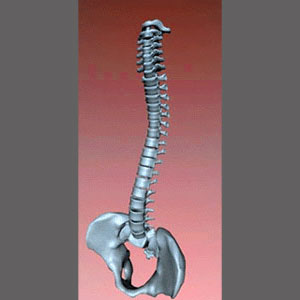
Congenital spinal stenosis is the term used to describe a condition where a person is born with an atypically narrow spinal canal. This condition may be sourced from the general anatomy of the spinal structures as a whole, or may be related to a specific congenital deformity within the canal space, such as a bone spur, disc problem, spinal curvature concern or other irregularity.
A congenitally narrowed spinal canal is rarely cause for alarm, but may predispose a person to a greater risk for symptomatic stenosis later in life. Remember, the central canal will likely decrease in size as a person gets older and if it is already narrow, then symptomatic stenosis may become a big concern.
This narrative examines spinal stenosis problems that exist from birth or are directly motivated by a congenital spinal abnormality.
Explanation of Congenital Spinal Stenosis
Congenital means that the spinal stenosis exists prior to birth, but does not detail the extent of the condition.
Minor narrowing of the central canal space is not an issue in most cases, although as previously mentioned, an already narrow canal might have a greater chance of experiencing a symptomatic version of stenosis as the person ages. Significantly narrowed central canal spaces from birth might cause developmental difficulties, neurological dysfunction and limited physical functionality from an early age and may require surgical intervention in some cases.
The worst of these conditions may result in partial or complete paralysis or permanent nerve injury. However, these extreme examples of congenital stenosis are very rare indeed.
Spinal Stenosis Treatment for Congenital Cases
Having general anatomical features which slightly narrow the overall canal diameter is usually nothing which requires any active monitoring or treatment. Having specific locations of focal stenosis due to congenital defects may require monitoring or even proactive treatment. In most cases where stenosis is thought to be symptomatic or problematic in youth, surgery will be considered to correct the abnormality and widen the canal. In some cases, physical therapy or other conservative measures might be utilized in cases of borderline stenosis.
Statistics clearly show a greater percentage of people with congenitally narrowed canals requiring invasive spinal stenosis surgeries later in life than the general population with more typical canal dimensions.
Congenital Stenosis Scenarios
Most people with mild to moderate congenital canal narrowing never know it until they have imaging done for some back injury or other health concern. They have lived their whole lives without the fear or knowledge of the stenotic condition and are usually startled by the term congenitally narrowed canal on the MRI report. Many unfortunately suffer a severe nocebo effect from this pronouncement, while others learn the facts about spinal stenosis and move past it.
If the finding of a congenitally narrowed canal is in fact fully or partially responsible for causing present day spinal stenosis symptoms, then it is advised to seek evaluation by a qualified neurologist for the best path to successful treatment.
Spinal Stenosis > What is Spinal Stenosis? > Congenital Spinal Stenosis





